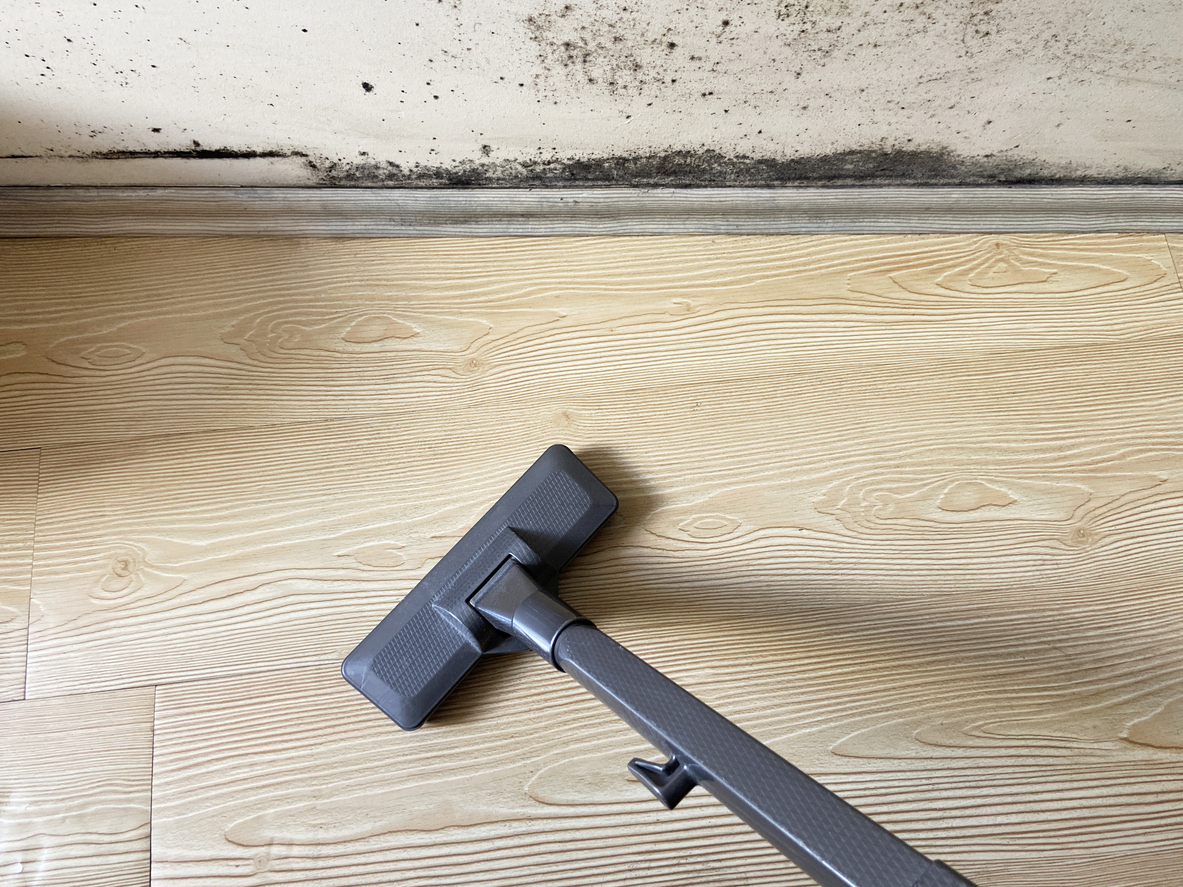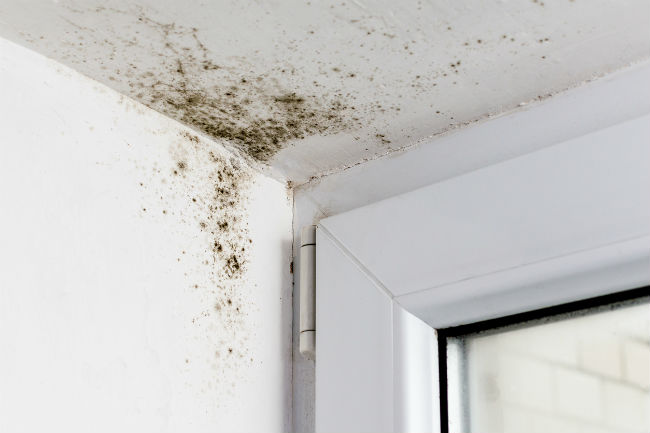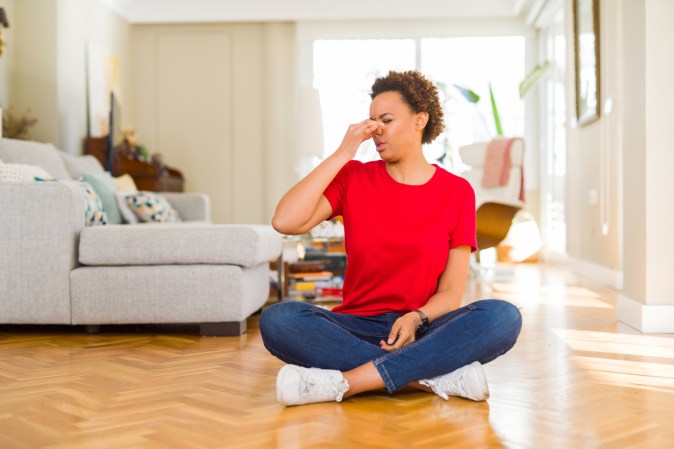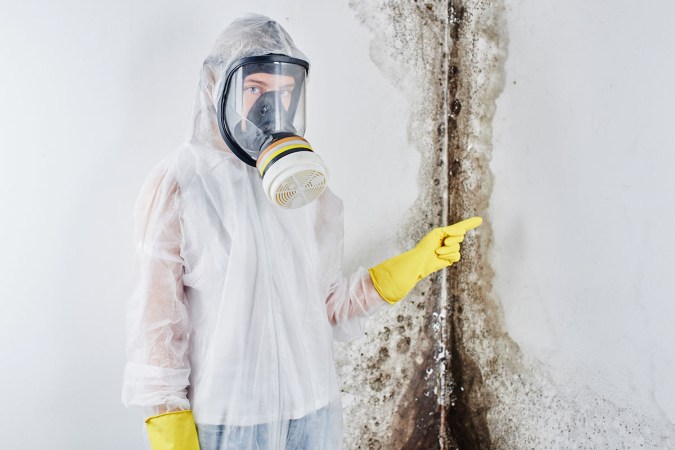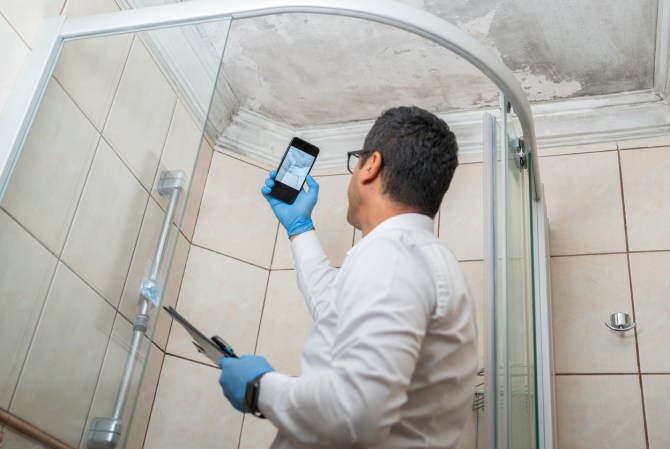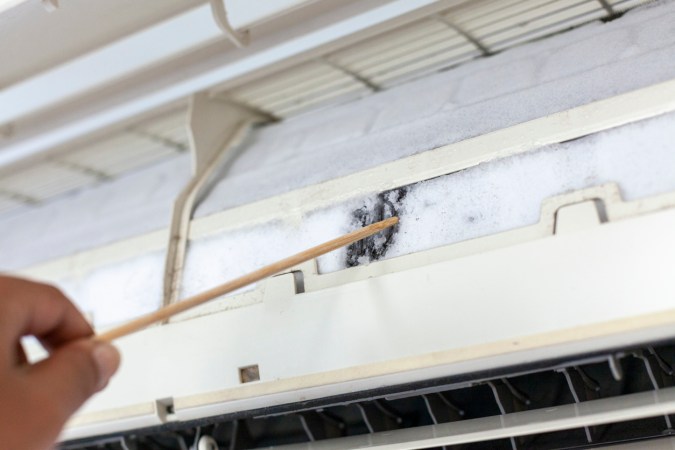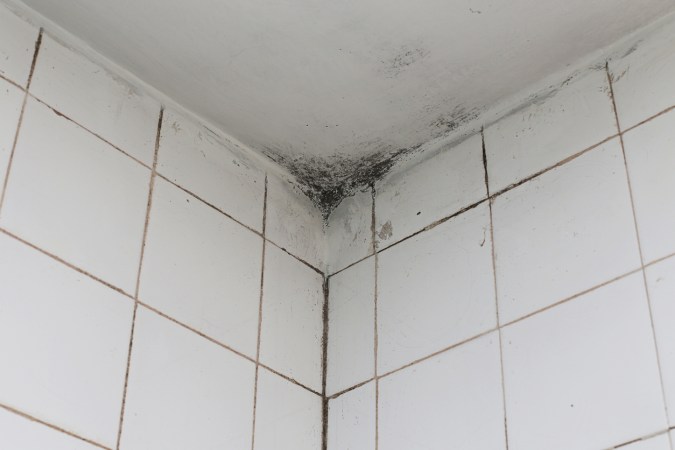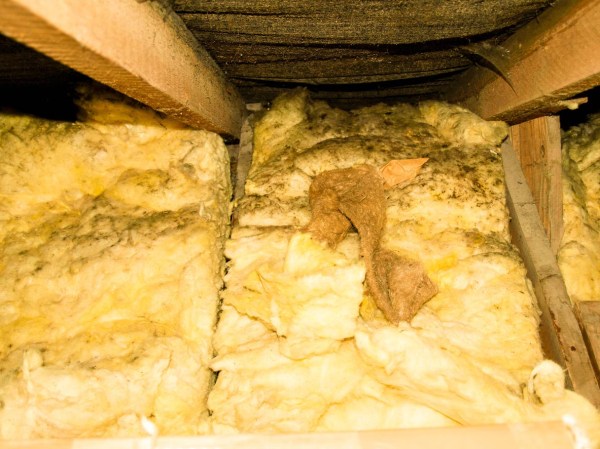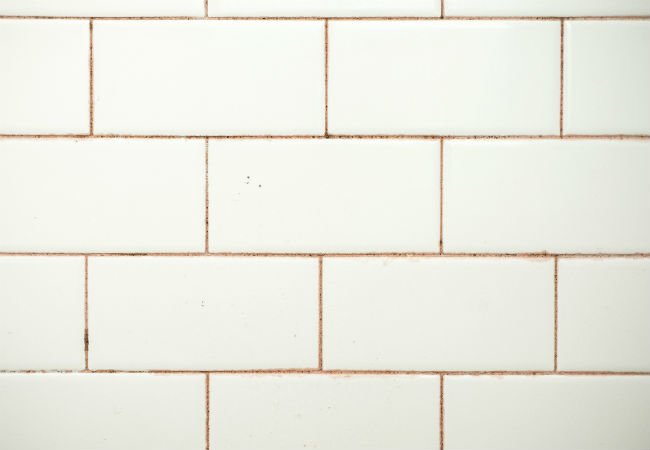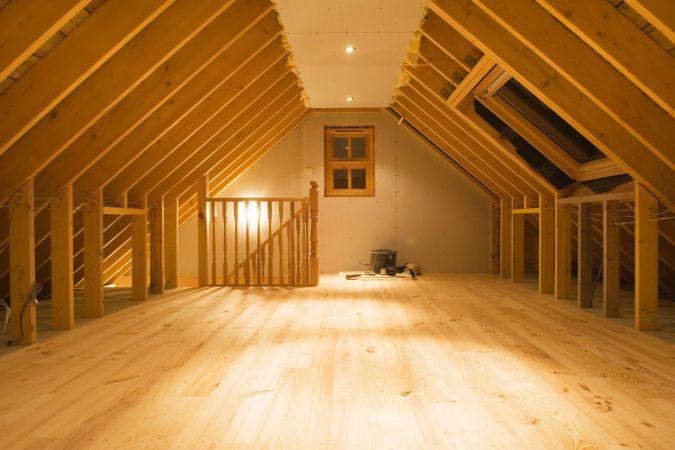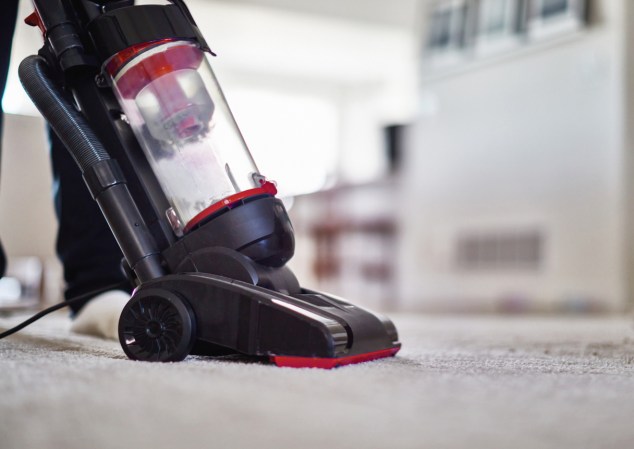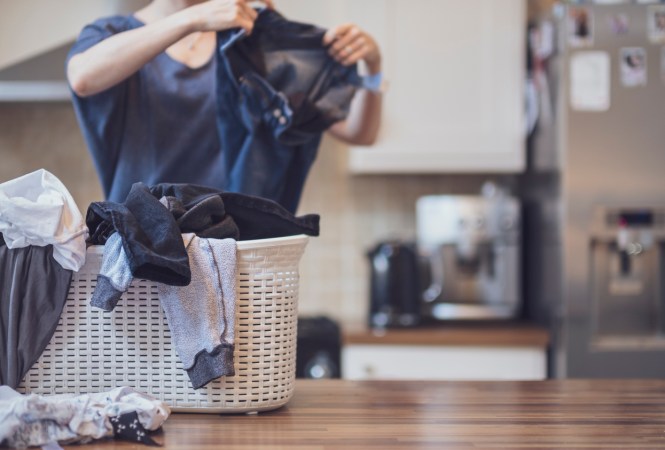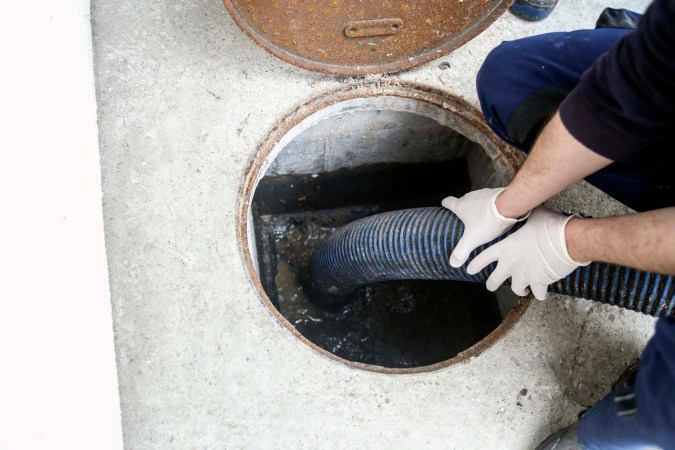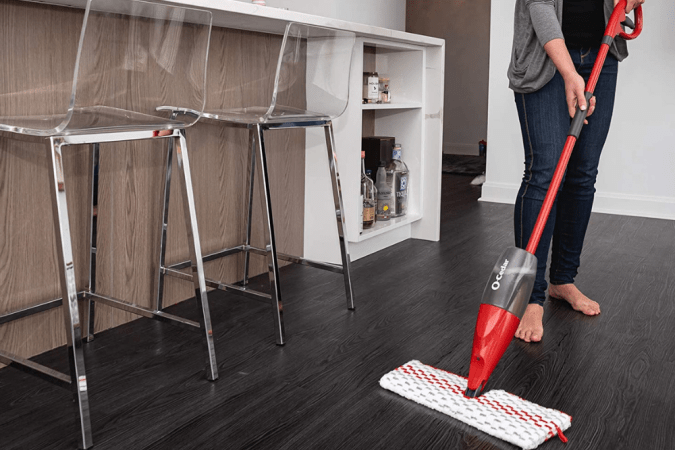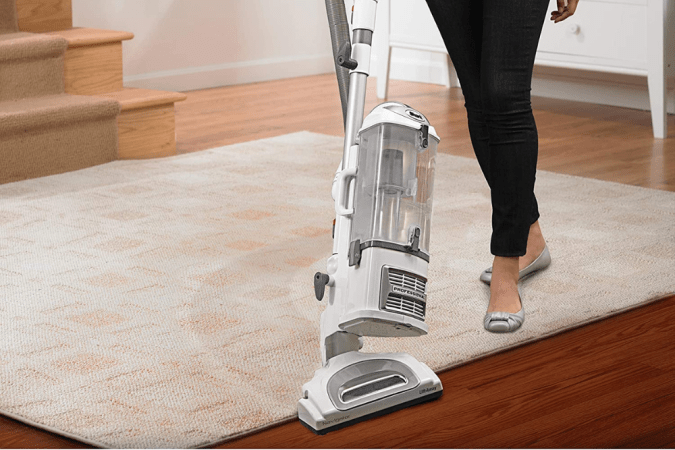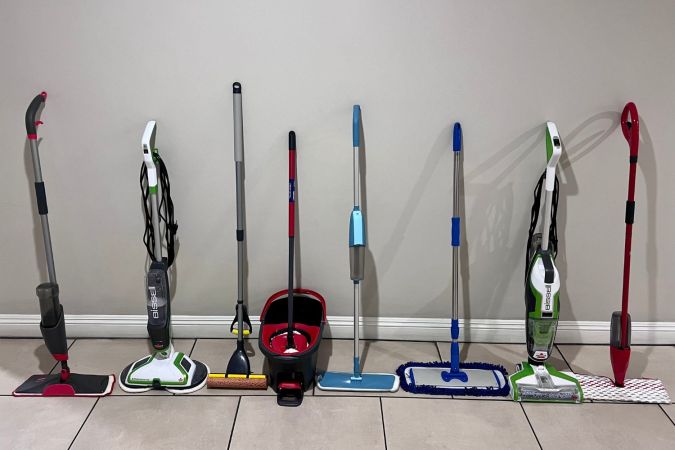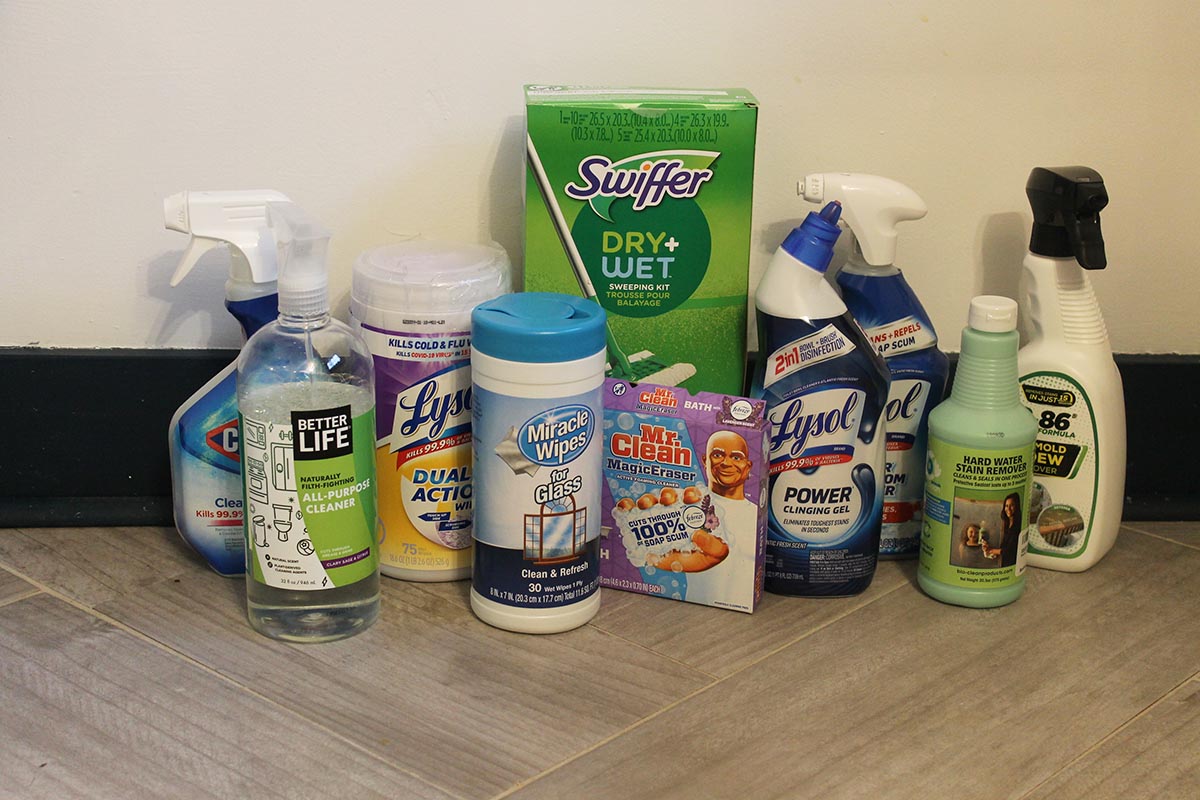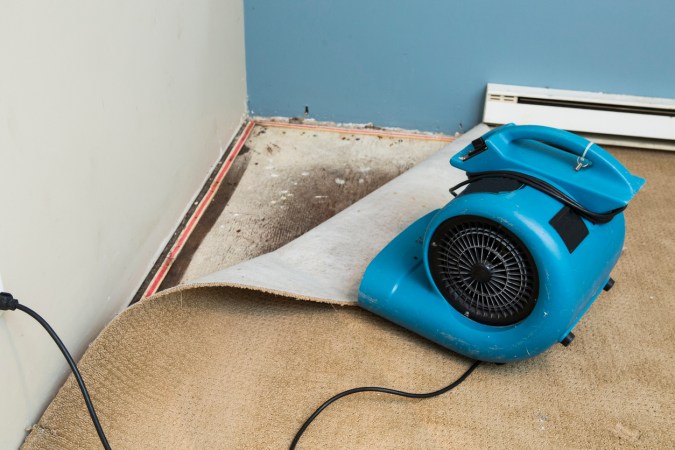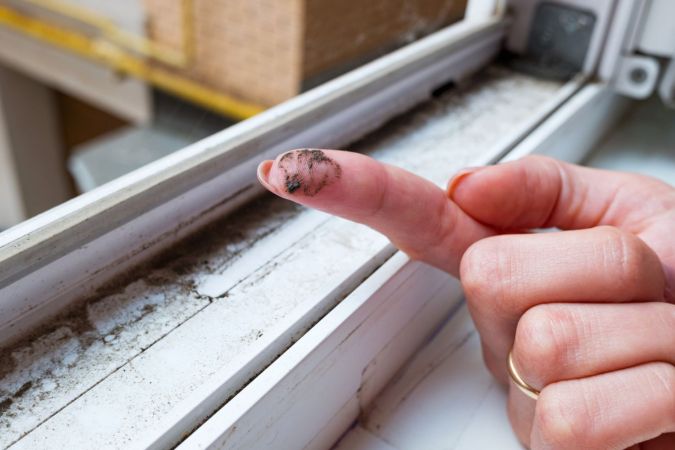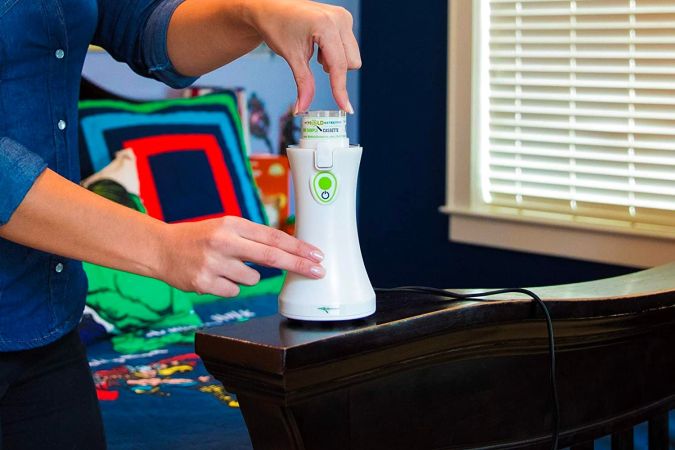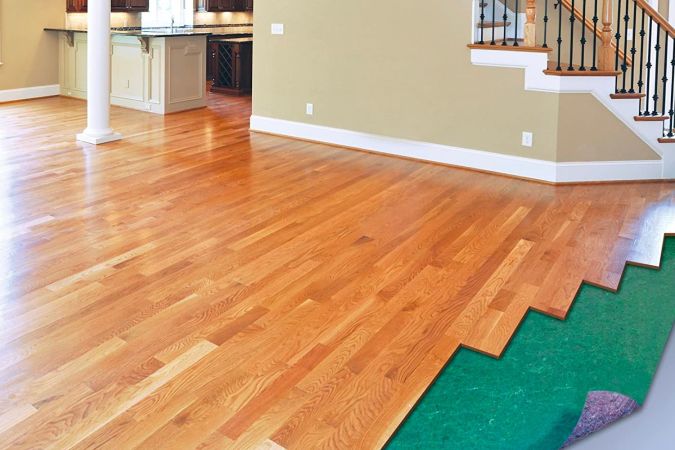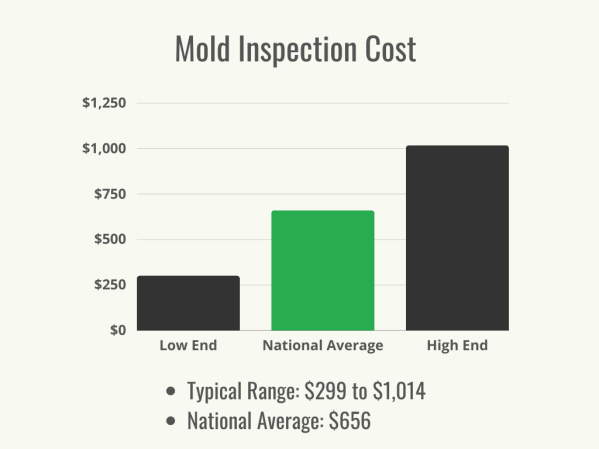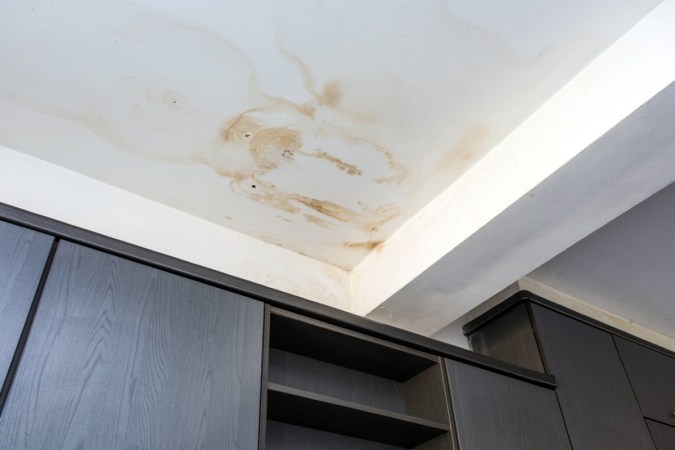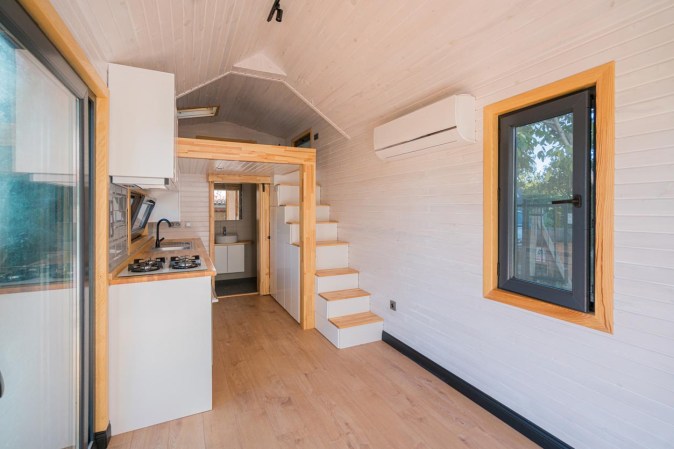We may earn revenue from the products available on this page and participate in affiliate programs. Learn More ›
What You Need to Know
- Spills, leaks, humidity, improper installation, and lack of ventilation in a home can all cause mold growth under laminate flooring.
- Some signs of mold under laminate flooring include musty odors, staining, warping, peeling, and allergy-like symptoms in residents.
- DIYers may be able to remove small amounts of mold under laminate flooring by peeling back the affected boards and scrubbing with bleach or a natural mold cleaner.
- It’s generally safest and most effective to have a mold remediation professional address mold growth.
Q: I’ve noticed a musty smell in my home and stains on my laminate flooring. Is it possible for mold to grow under the laminate flooring? If so, how can I get rid of it?
A: Stains on laminate floors and an unpleasant smell in certain rooms could indicate more than just water damage—these may be warning signs of hidden mold in the house lurking beneath the floorboards.
Recognizing the signs of mold and understanding the steps to effectively address it is important to maintain a healthy living environment. If left unchecked, mold beneath laminate flooring can present a risk of both structural damage and occupant health issues. Residents who suspect they have this issue will want to learn what caused the mold growth, how to remove it, and when it’s time to call one of the best mold removal companies (like Servpro) for assistance.
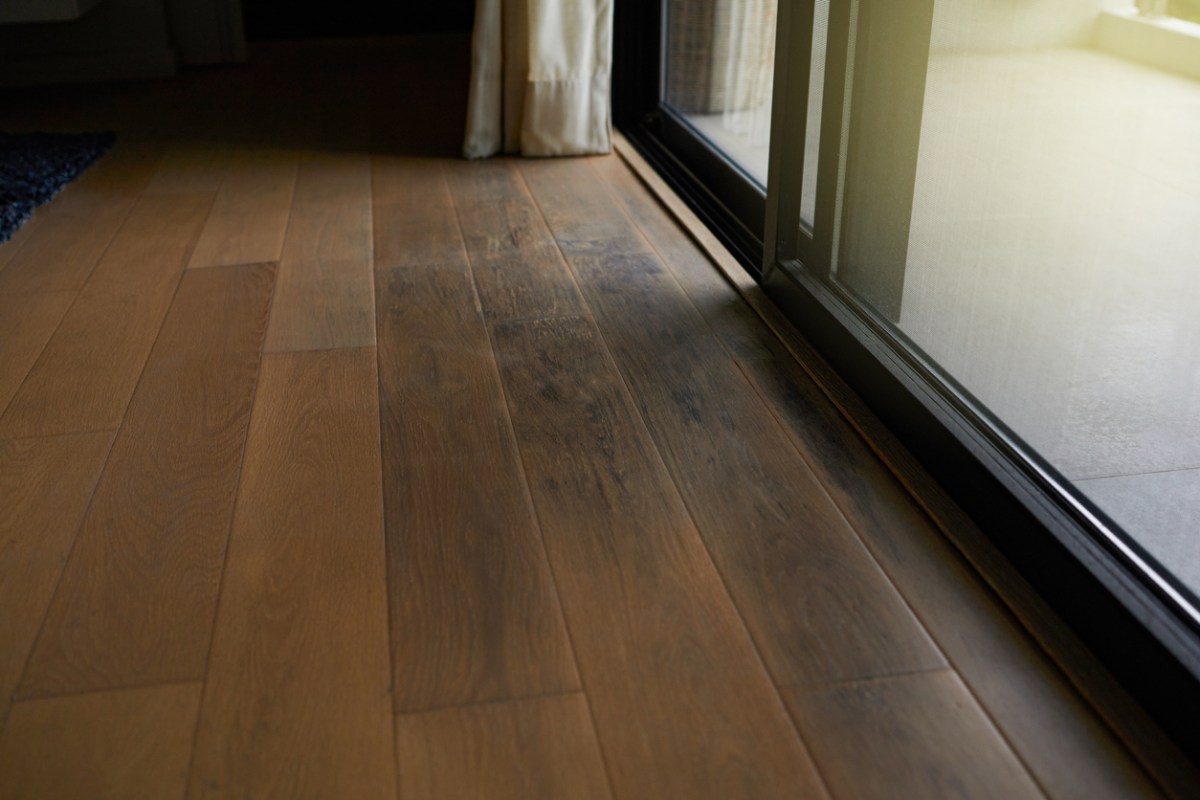
Mold Can Grow Under Laminate Flooring—Here’s How
A few common causes of moisture in homes can lead to mold growth under laminate floors. These include:
- Spills that seep through cracks. Unattended spills can slip through the seams of laminate planks, providing a moisture source that allows mold to grow.
- Humidity in the air. High humidity levels can lead to condensation on the cooler surface of the floor, creating a moist environment that encourages mold growth.
- Leaks from appliances and plumbing. Water from leaking appliances or plumbing fixtures can accumulate under laminate flooring and lead to mold growth.
- Poor installation. Incorrect installation of laminate flooring can cause gaps or spaces where moisture can collect and mold can grow.
- Lack of proper ventilation. Inadequate ventilation can increase indoor humidity levels, thereby creating a mold-friendly environment.
It’s important to note that it only takes 24 to 48 hours for mold to grow under wet laminate if it has the right conditions, but it may be possible to get ahead of this issue. “Leaks and moisture can be found early on with regular home checks, especially in crawl spaces,” says Kerry Sherin, a consumer advocate at Ownerly, a home valuation company and resource for homeowners. She adds that humidity is another factor that can lead to mold growth, but having adequate air circulation in the home goes a long way in keeping humidity (and by extension mold) in check: “By lowering the humidity in your home with air fans or dehumidifiers, you can stop fungi from growing.”
4 Unmistakable Signs of Mold Under Laminate Flooring
Mold growing under laminate flooring may go undetected for a while, as the source is hidden beneath the flooring surface. However, there are a handful of unmistakable signs of mold in the house that may alert homeowners to the issue before it escalates.
According to Michael Rubino, a mold and air quality expert and founder of indoor air quality improvement company HomeCleanse, visible signs of mold growth under flooring include “discoloration, bubbling, cracking, peeling, buckling, sagging, warping, or loose floorboards.” He also notes that some signs may not be visible, such as odors or health symptoms. Exploring all of these signs further will make it easier for residents to identify them should they appear within the home.
A musty odor without an obvious source is one of the first signs of mold under laminate flooring.
An early and common indicator of mold on a subfloor is a damp, earthy odor in the affected room. This is also true for identifying mold under hardwood floors, carpet, and most other flooring types. Unlike other household odors that can be easily traced, the distinctive mold smell in the house—often described as musty—can permeate, signaling to homeowners that a close inspection is warranted. Given that mold thrives in hidden, moist spaces, the scent is a critical sign that mold spores are actively growing in the moisture under laminate flooring.
As the problem progresses, water stains and dark mold spores may begin to appear on the surface of the flooring.
Water stains, or discolored patches, can become visible on the surface of flooring. If cleaning laminate floors doesn’t make these spots disappear, this indicates that moisture (and potentially mold) has seeped up from beneath. It can sometimes be difficult to distinguish between water damage vs. mold, especially since these issues often go hand in hand. Dark spots or clusters, which are actually mold spores, are one of the surest signs mold is growing. If a resident sees black mold in the house and other physical manifestations, this can indicate the presence and growth of mold is severe. “With so many [varieties] in existence, mold can come in various colors, shapes, and textures,” Rubino says. “Look for discoloration, including green, pink, white, gray, blue, red, black, brown, or a combination of hues.”
The laminate surface of the flooring may also begin to warp or peel due to water infiltration from below.
There are several reasons for laminate flooring to peel, such as age, improper installation, or sun damage. However, water damage and mold growth are among the most common reasons for this issue. When moisture accumulates and gets trapped under the flooring, it causes the material to expand and lose its original flatness and alignment. These structural changes compromise the integrity of the flooring and signal a moist environment conducive to mold growth. Especially in the case that peeling appears alongside other signs of mold under laminate flooring, it’s worth looking into this issue more deeply.
In some cases, residents may notice allergy-like symptoms from mold exposure such as sneezing, coughing, or skin rashes.
According to the United States Environmental Protection Agency (EPA), exposure to mold in the house can lead to allergy-like symptoms, such as sneezing, coughing, watery eyes, and skin rashes, particularly in individuals with mold sensitivities or allergies. Although mold may have proliferated unseen beneath the laminate flooring, these reactions are the body’s response that airborne mold spores are present in the environment. “Spores, fragments, and mycotoxins are small enough to be inhaled, ingested, and absorbed into the body, potentially leading to adverse health reactions in those exposed,” Rubino adds. “That’s essentially the alarm bell sounding that something isn’t right.”
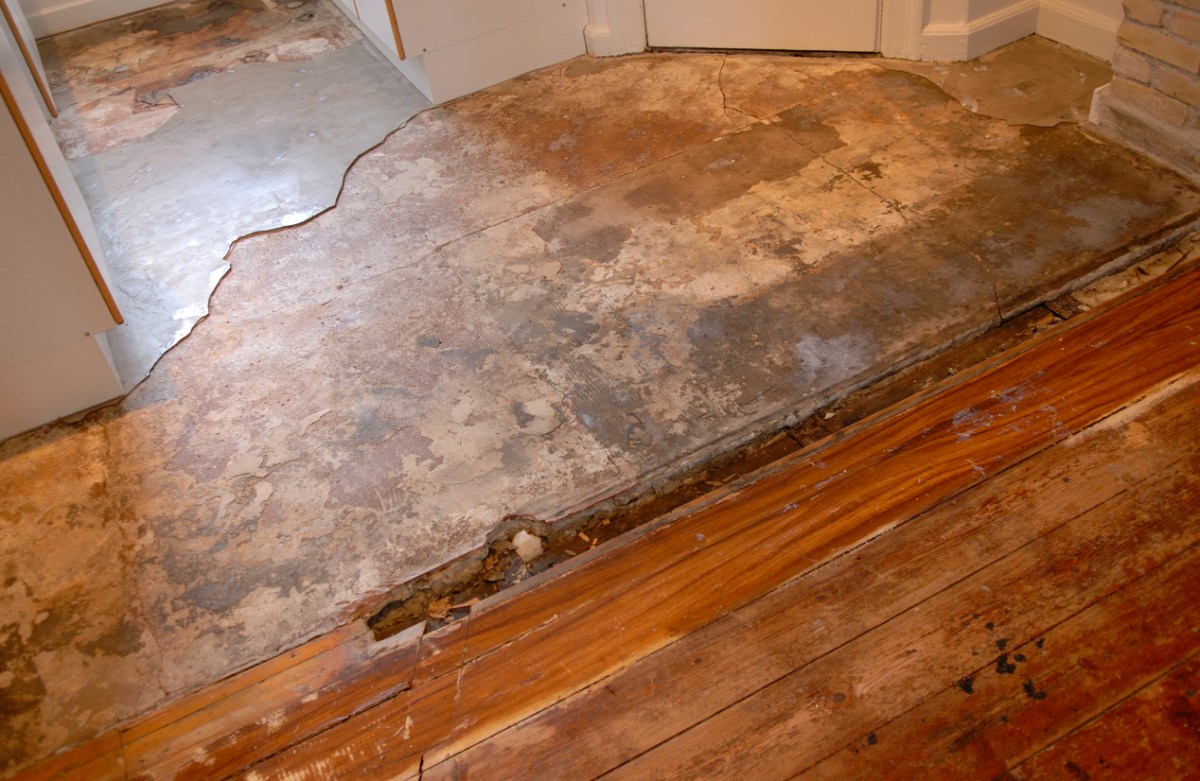
How to Get Rid of Mold Under Laminate Floors
Mold removal requires a careful approach to ensure that mold is removed safely and doesn’t return. It’s worth noting that the process may be slightly different for getting rid of mold under other types of flooring.
- First, it’s important to put on protective gear and seal off the area to prevent the spread of mold spores.
Protective gear, including gloves, masks, and goggles, will help protect homeowners from direct contact with mold and its potentially harmful effects. Sealing off the affected area to contain mold spores within the workspace is also crucial for the safety of everyone—including pets—in the home. This preparatory measure can be done by using plastic sheeting and tape to cover doorways and vents.
- Carefully remove the affected portion of the flooring and inspect the damage. Mold growth that has spread to the underside of the floorboards is best addressed by a professional.
After protective measures are in place, the laminate flooring will need to be carefully removed to assess the severity of the mold. It’s important to look closely at the underside of the laminate floorboards where mold tends to thrive unnoticed. If the mold inspection reveals widespread mold infestation or damage that extends beyond the surface, homeowners are advised to have someone who inspects for mold assess the damage and advise on the next steps to take (mold inspection costs $299 to $1,014 on average).
- Clean the moldy patches of flooring with bleach or a natural mold cleaner such as vinegar or borax.
Once the affected laminate sections are removed and the moldy areas are exposed, a solution of bleach diluted with water can kill mold on nonporous surfaces. Vinegar or a borax solution offers a less harsh but effective natural means of eradicating mold if an alternative to bleach is needed. These substances will help penetrate the mold’s structure and neutralize it to prevent further growth. However, the cleaning solution will need to be thoroughly applied to each mold-infested area and left to sit to kill the mold under the floor effectively. “All contamination must be removed so that exposure does not continue,” Rubino explains. “Otherwise, the microbial growth can come right back. Think of it as eliminating a weed.”
- Thoroughly dry the flooring while making sure that the space is well ventilated.
Adequate drying is essential to prevent the recurrence of mold, as lingering moisture serves as a breeding ground for future growth. Drying water under laminate floors without removing the planks involves using a combination of airflow, dehumidifiers, and heat to encourage evaporation and draw moisture out from beneath the flooring. Setting up fans to blow across the affected area, paired with a dehumidifier, can significantly speed up drying. It is important to maintain this well-ventilated environment until the flooring is completely dry to the touch and no moisture can be detected. Rubino advises maintaining an indoor humidity level of 35 to 50 percent, as some species of mold can grow in humidity of 60 percent or higher.
- Replace the sections of flooring that have been removed, or have a flooring contractor make any necessary repairs.
Once the mold has been removed and the area has dried completely, the laminate flooring can be put back in place. Depending on the extent of the damage and the specific condition of the flooring, a professional’s expertise may be required to ensure a seamless restoration. A skilled contractor can make the necessary repairs and ensure the new sections of flooring are perfectly matched and aligned with the existing installation. If the flooring is damaged beyond repair, one of the best laminate flooring installers (like Empire Today or LL Flooring) can put in new flooring.
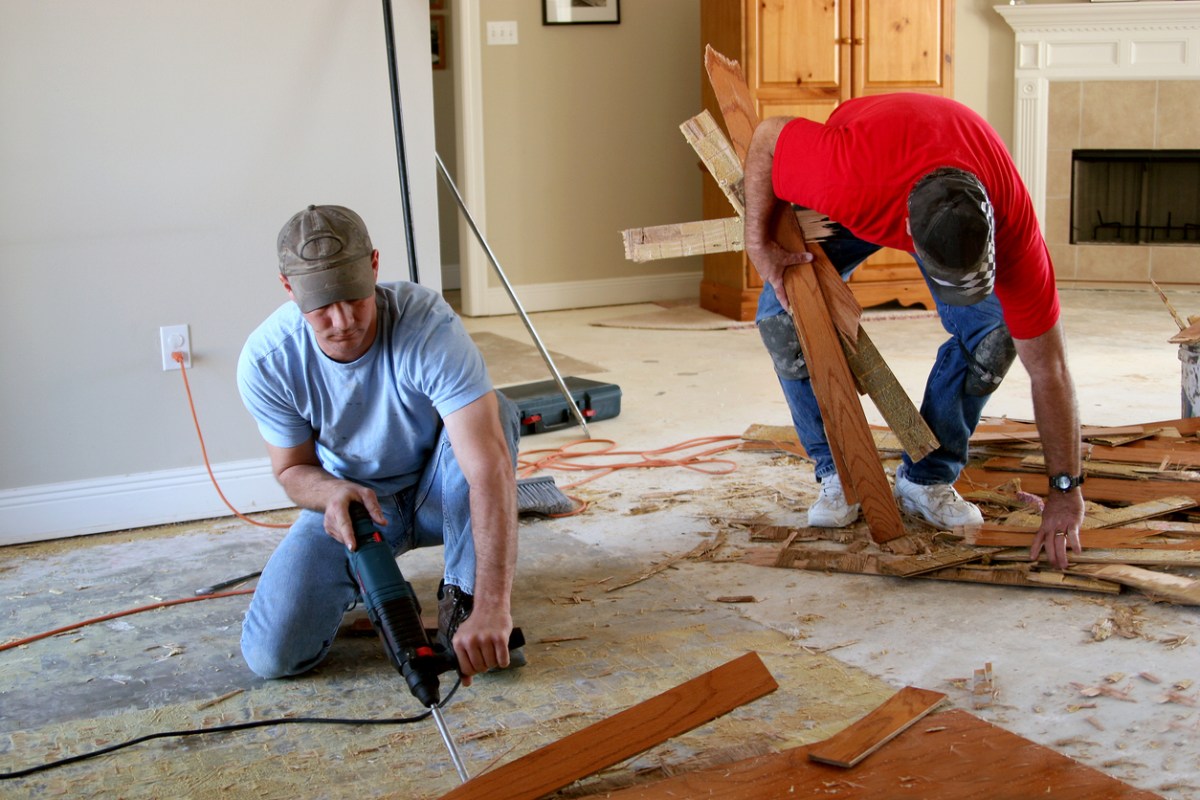
It’s generally best to let a mold remediation specialist identify and remove mold under laminate flooring.
Ultimately, house mold removal is best left to a specialist due to the complexity of effectively eradicating mold and preventing its recurrence. Mold removal companies have the necessary tools and skills to identify, assess, and remove mold, even in areas where it is not immediately visible. According to Rubino, opting for professional mold removal may even save homeowners money on mold remediation costs in the long run: “It’s best to bring in qualified professionals. Not to mention, it’s difficult to determine the extent of the contamination situation…A qualified inspector and remediation team will be able to accomplish all of [the necessary] steps the first time. This saves money on repeating the process and stops the harmful exposure the source creates.”
In addition to knowing how to get rid of mold under flooring, specialists can identify underlying moisture sources and prevent the issue from coming back. Although mold remediation costs are not insignificant, it’s often worth opting for this service to address the root of the problem. Sherin notes, “If you don’t take the right steps to clean up and figure out why the mold [grew], you could have it happen again. A professional in mold remediation has the right tools and information to make sure your property is safe and all mold problems are gone.”
Improperly installed laminate flooring will need to be replaced by a flooring professional to prevent future mold growth.
Improper installation of laminate flooring can create conditions conducive to mold growth, such as gaps and spaces that allow moisture to seep in and become trapped. Over time, these moisture issues can also damage the integrity and appearance of the flooring.
In these cases, it may be best to replace the flooring completely. It’s important that the chosen installers are reputable and will not repeat the mistakes made when the existing flooring was installed, as this can lead to even more costly repairs. While hiring highly qualified contractors may increase laminate installation costs, these professionals will ensure tight seams and adequate moisture barriers like laminate underlayment are being used, thereby eliminating the spaces where moisture can accumulate.

